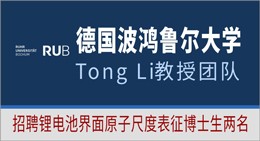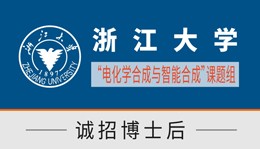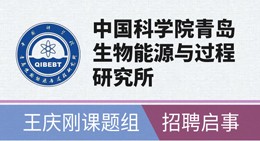当前位置:
X-MOL 学术
›
ChemMedChem
›
论文详情
Our official English website, www.x-mol.net, welcomes your
feedback! (Note: you will need to create a separate account there.)
Galloflavin (CAS 568‐80‐9): A Novel Inhibitor of Lactate Dehydrogenase
ChemMedChem ( IF 3.6 ) Pub Date : 2011-11-04 , DOI: 10.1002/cmdc.201100471 Marcella Manerba , Marina Vettraino , Luigi Fiume , Giuseppina Di Stefano , Andrea Sartini , Elisa Giacomini , Rosa Buonfiglio , Marinella Roberti , Maurizio Recanatini
ChemMedChem ( IF 3.6 ) Pub Date : 2011-11-04 , DOI: 10.1002/cmdc.201100471 Marcella Manerba , Marina Vettraino , Luigi Fiume , Giuseppina Di Stefano , Andrea Sartini , Elisa Giacomini , Rosa Buonfiglio , Marinella Roberti , Maurizio Recanatini
One of the most prominent alterations in cancer cells is their strict dependence on the glycolytic pathway for ATP generation. This observation led to the evaluation of glycolysis inhibitors as potential anticancer agents. The inhibition of lactate dehydrogenase (LDH) is a promising way to inhibit tumor cell glucose metabolism without affecting the energetic balance of normal tissues. However, the success of this approach depends chiefly on the availability of inhibitors that display good selectivity. We identified a compound (galloflavin, CAS 568‐80‐9) which, in contrast to other inhibitors of human LDH, hinders both the A and B isoforms of the enzyme. To determine the mechanism of action, we collected LDH‐A and ‐B inhibition data in competition reactions with pyruvate or NADH and evaluated the results using software for enzyme kinetics analysis. We found that galloflavin inhibits both human LDH isoforms by preferentially binding the free enzyme, without competing with the substrate or cofactor. The calculated Ki values for pyruvate were 5.46 μM (LDH‐A) and 15.06 μM (LDH‐B). In cultured tumor cells, galloflavin blocked aerobic glycolysis at micromolar concentrations, did not interfere with cell respiration, and induced cell death by triggering apoptosis. To our knowledge, the inhibition of LDH is, to date, the only biochemical effect described for galloflavin. Because galloflavin is not commercially available, we also describe herein a procedure for its synthesis and report its first full chemical characterization.
中文翻译:

镓黄素(CAS 568‐80‐9):乳酸脱氢酶的新型抑制剂
癌细胞中最显着的变化之一是它们严格依赖于糖酵解途径来产生ATP。该观察结果导致了对糖酵解抑制剂作为潜在抗癌药的评价。乳酸脱氢酶(LDH)的抑制是一种抑制肿瘤细胞葡萄糖代谢而不影响正常组织能量平衡的有前途的方法。但是,这种方法的成功主要取决于显示出良好选择性的抑制剂的可用性。我们鉴定出了一种化合物(galloflavin,CAS 568-80-9),与人LDH的其他抑制剂相反,它既阻碍了酶的A异构体,又阻碍了B异构体。为了确定作用机理,我们在与丙酮酸或NADH的竞争反应中收集了LDH-A和-B抑制数据,并使用酶动力学分析软件评估了结果。我们发现,galoflavin通过优先结合游离酶而不与底物或辅因子竞争来抑制两种人LDH亚型。经计算ķ我值丙酮酸为5.46μ中号(LDH-A)和15.06μ中号(LDH-B)。在培养的肿瘤细胞中,黄素以微摩尔浓度阻断有氧糖酵解,不干扰细胞呼吸,并通过触发凋亡诱导细胞死亡。据我们所知,迄今为止,LDH的抑制作用是描述的唯一有关黄素的生化作用。由于galoflavin不可商购,因此我们在本文中还描述了其合成方法,并报告了其第一个完整的化学特征。
更新日期:2011-11-04
中文翻译:

镓黄素(CAS 568‐80‐9):乳酸脱氢酶的新型抑制剂
癌细胞中最显着的变化之一是它们严格依赖于糖酵解途径来产生ATP。该观察结果导致了对糖酵解抑制剂作为潜在抗癌药的评价。乳酸脱氢酶(LDH)的抑制是一种抑制肿瘤细胞葡萄糖代谢而不影响正常组织能量平衡的有前途的方法。但是,这种方法的成功主要取决于显示出良好选择性的抑制剂的可用性。我们鉴定出了一种化合物(galloflavin,CAS 568-80-9),与人LDH的其他抑制剂相反,它既阻碍了酶的A异构体,又阻碍了B异构体。为了确定作用机理,我们在与丙酮酸或NADH的竞争反应中收集了LDH-A和-B抑制数据,并使用酶动力学分析软件评估了结果。我们发现,galoflavin通过优先结合游离酶而不与底物或辅因子竞争来抑制两种人LDH亚型。经计算ķ我值丙酮酸为5.46μ中号(LDH-A)和15.06μ中号(LDH-B)。在培养的肿瘤细胞中,黄素以微摩尔浓度阻断有氧糖酵解,不干扰细胞呼吸,并通过触发凋亡诱导细胞死亡。据我们所知,迄今为止,LDH的抑制作用是描述的唯一有关黄素的生化作用。由于galoflavin不可商购,因此我们在本文中还描述了其合成方法,并报告了其第一个完整的化学特征。































 京公网安备 11010802027423号
京公网安备 11010802027423号